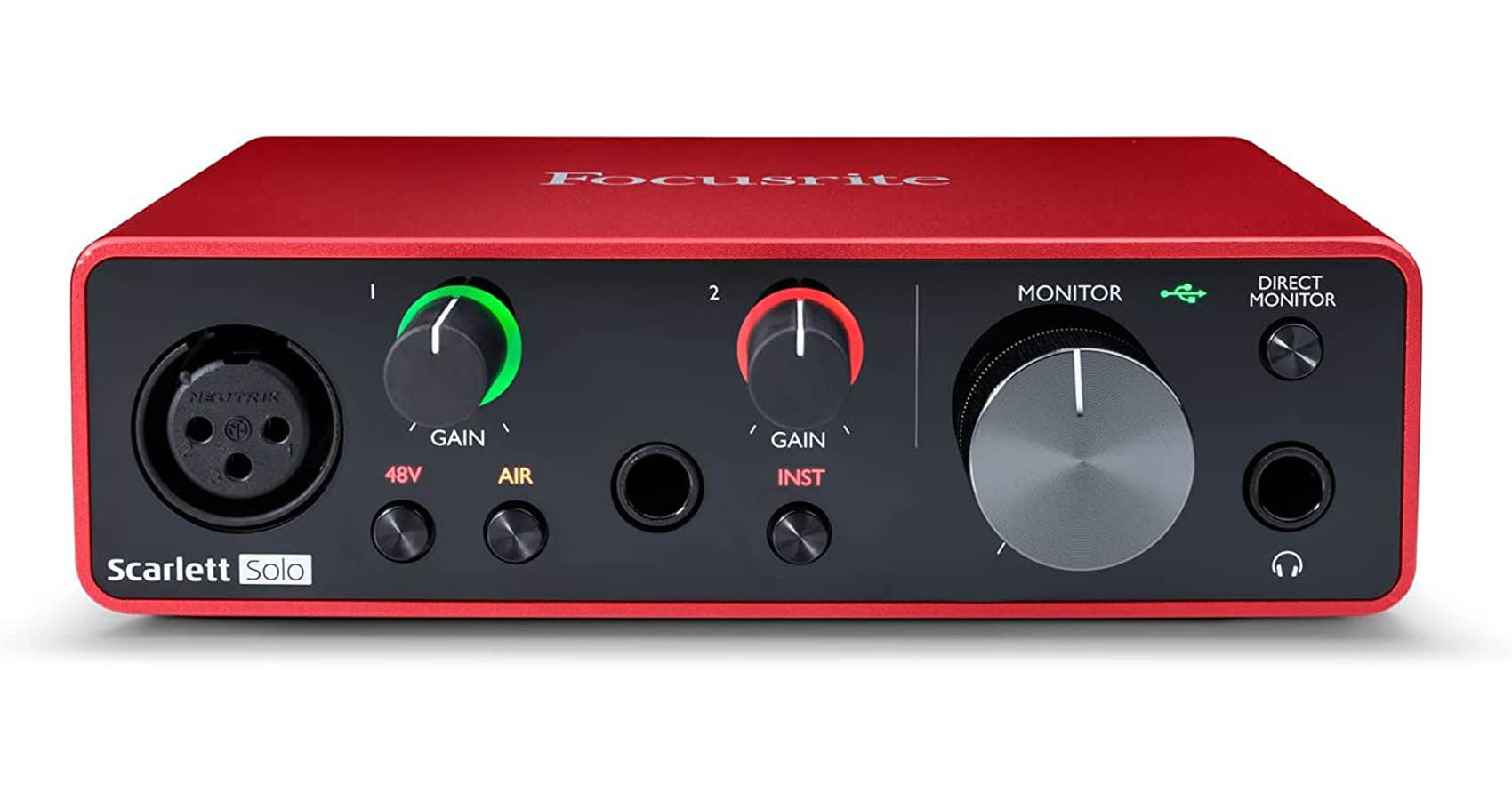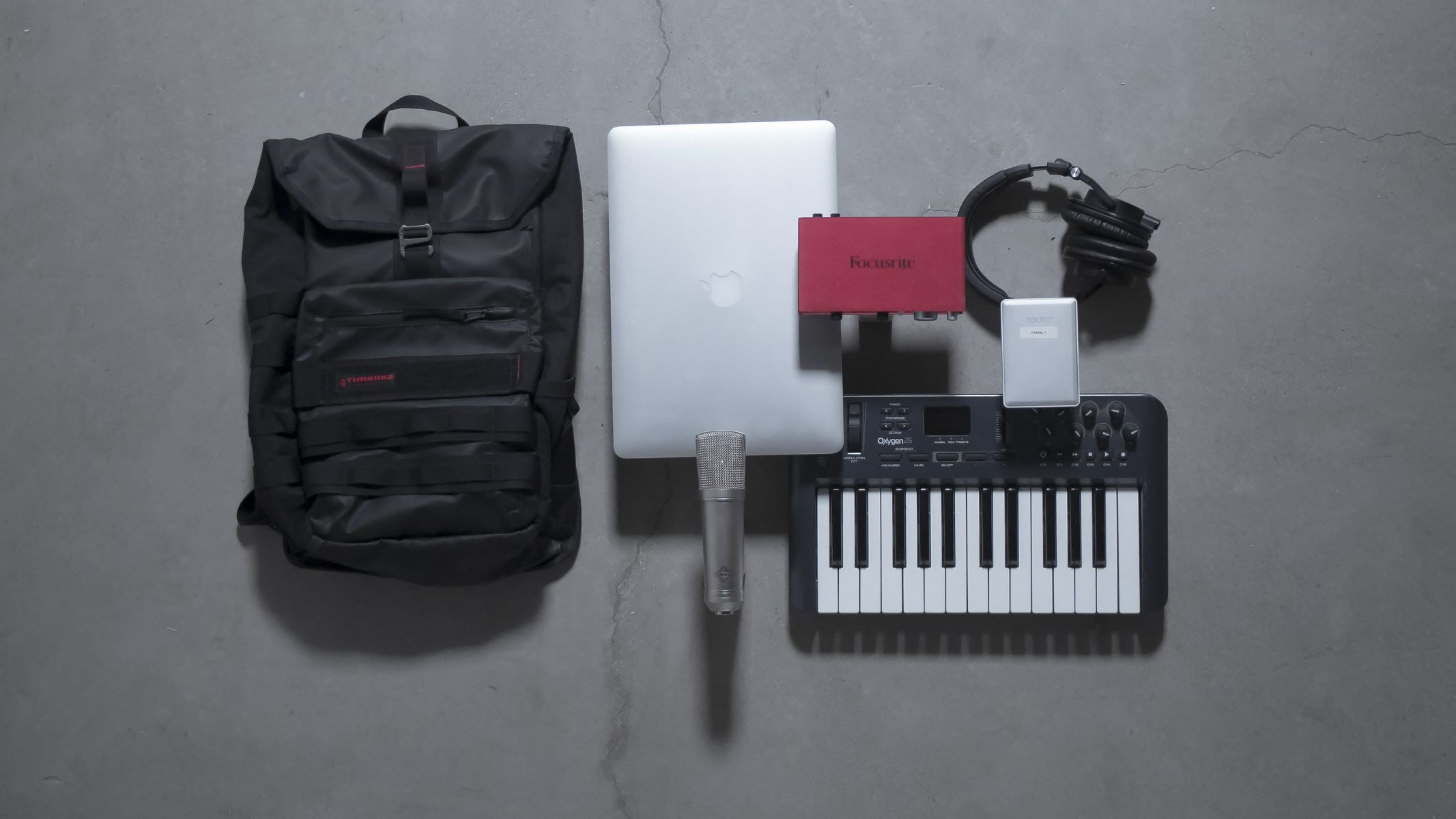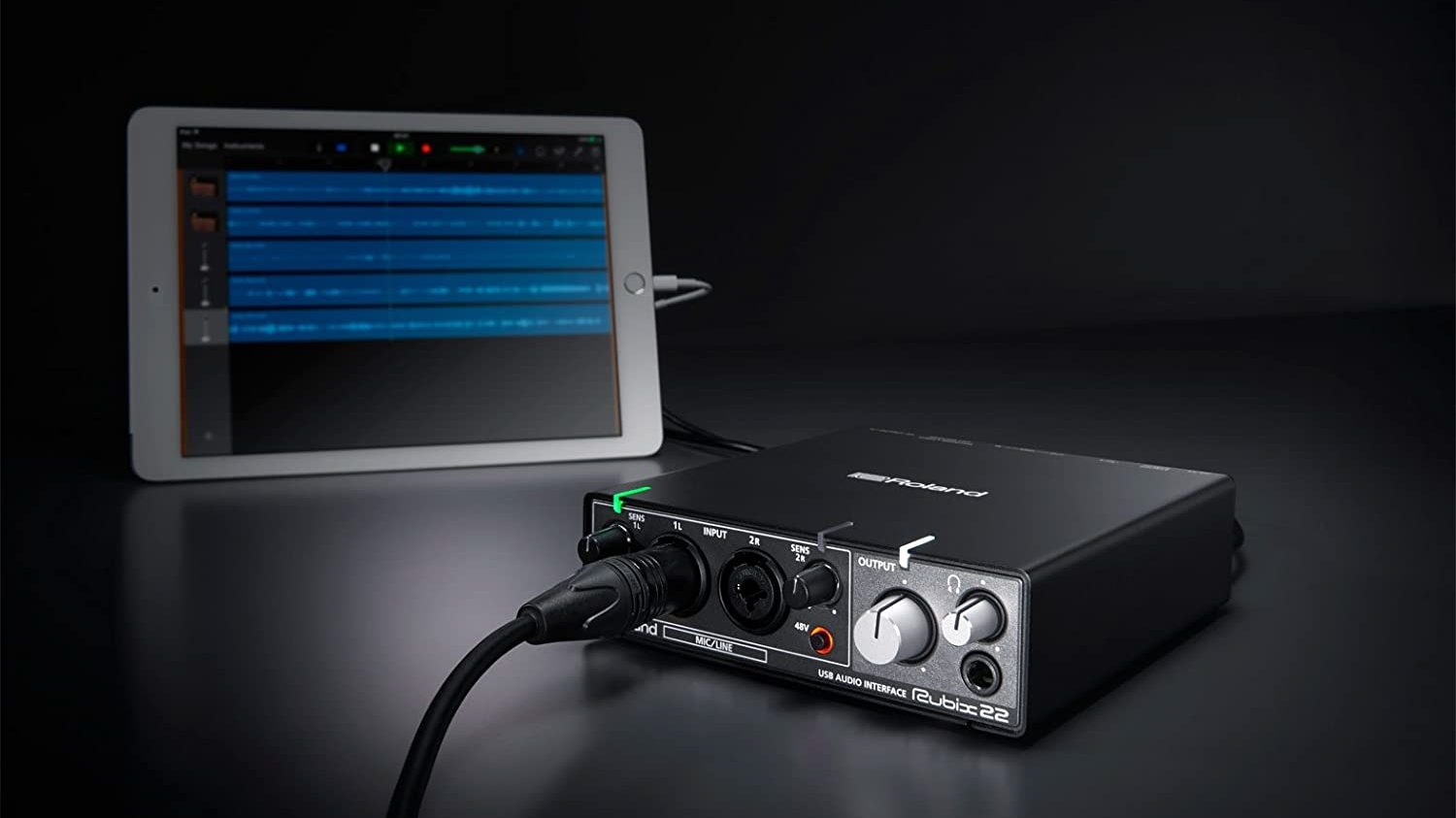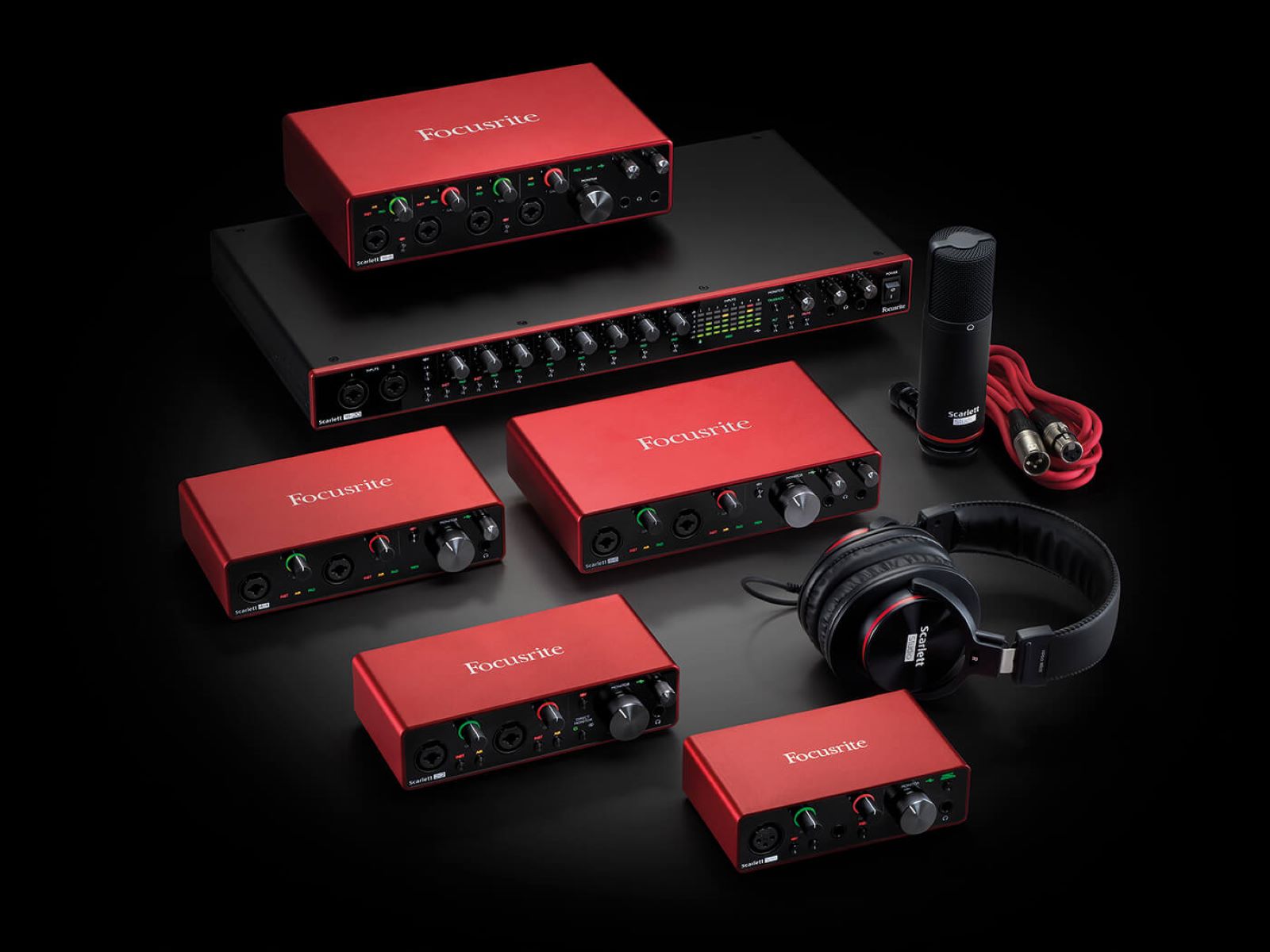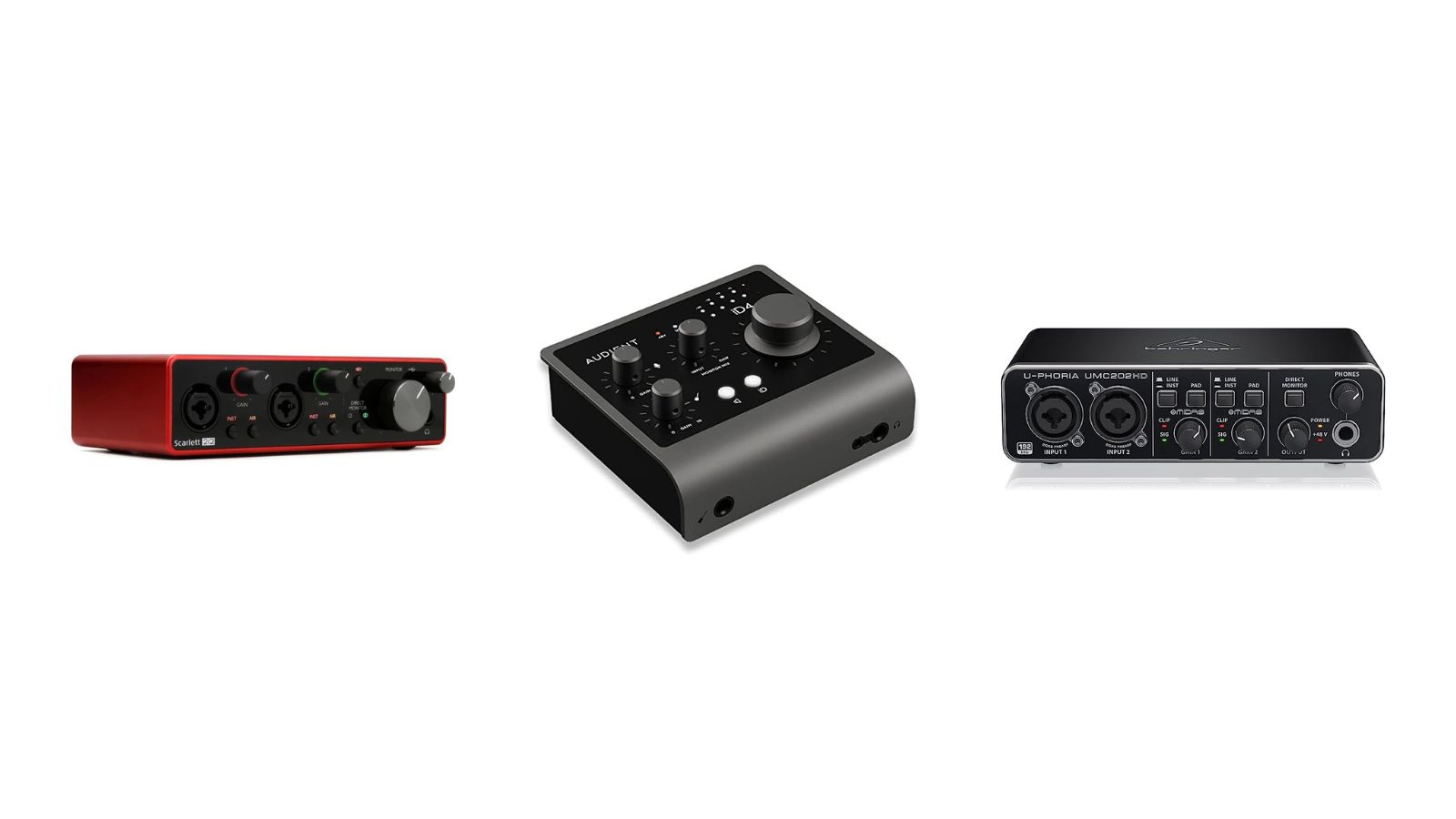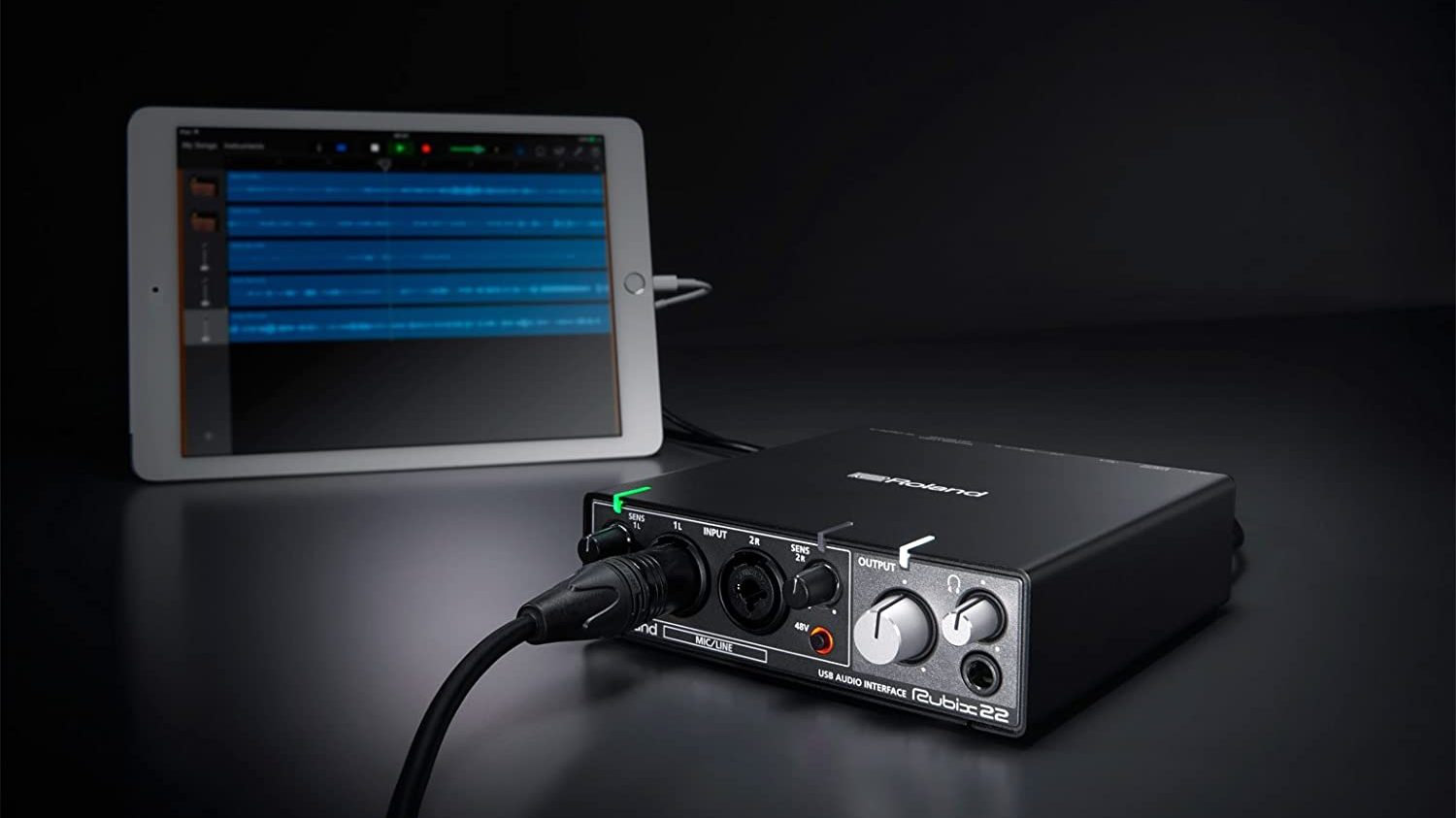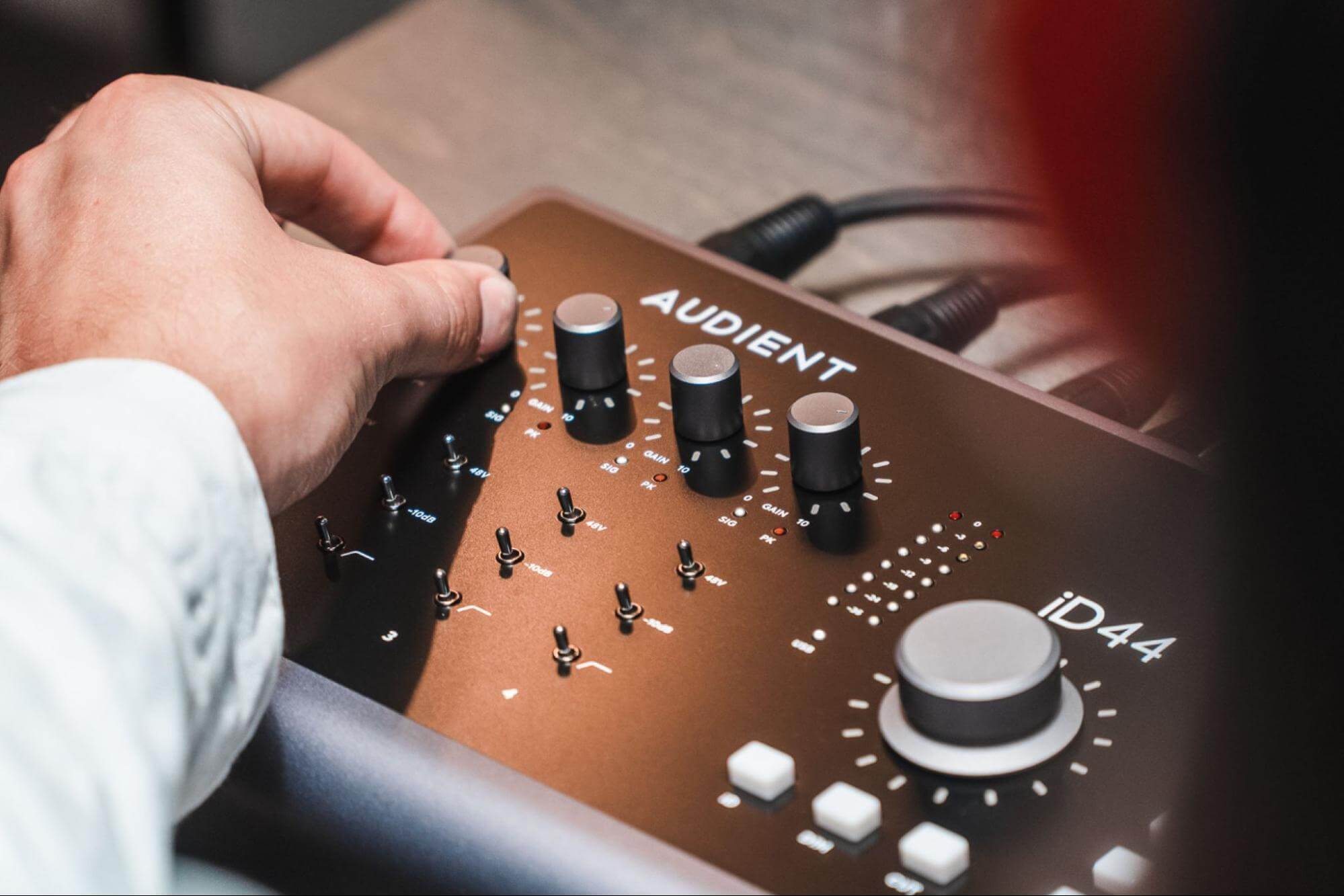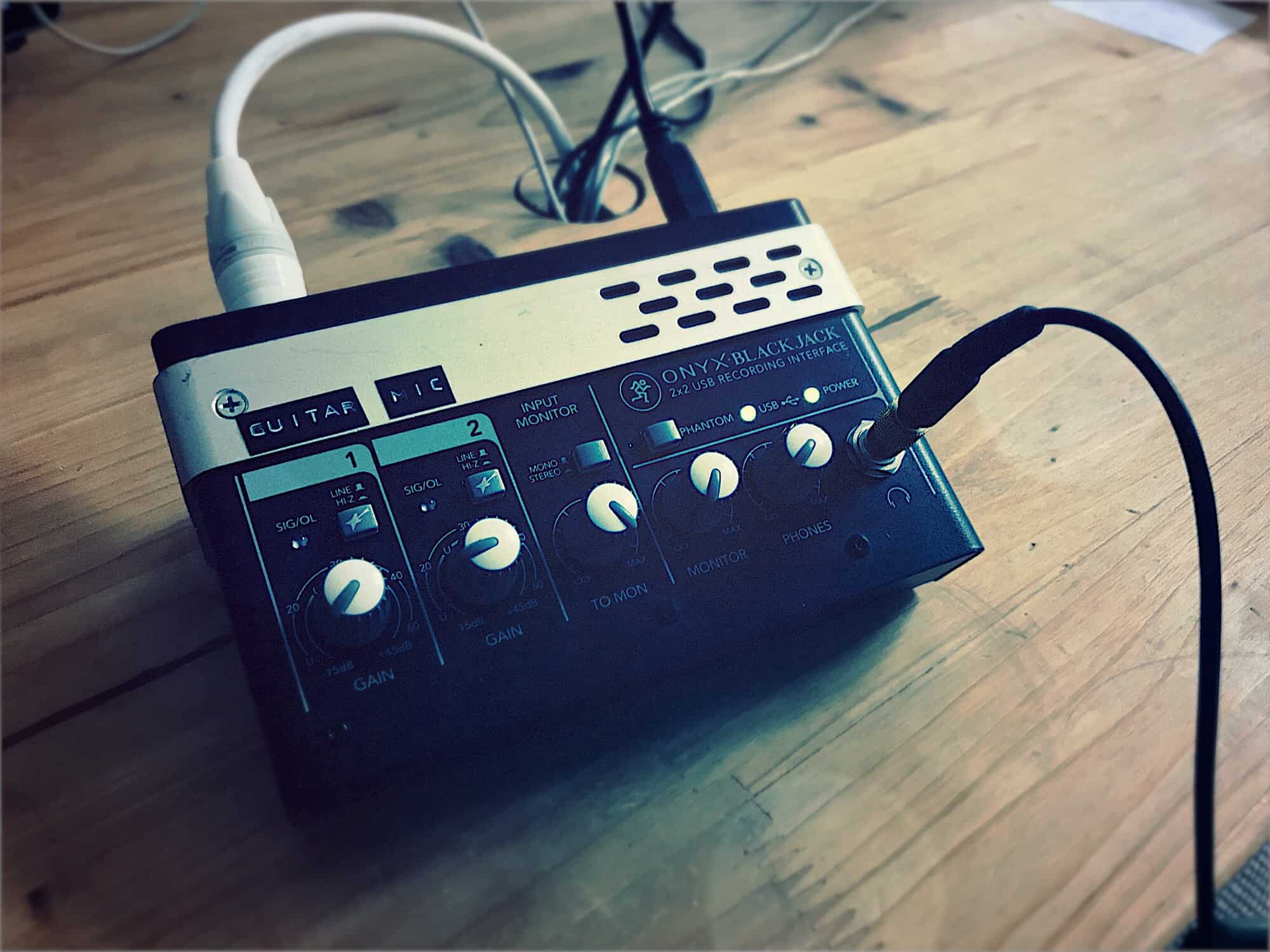Home>Production & Technology>Audio Interface>What Is DSP Audio Interface


Audio Interface
What Is DSP Audio Interface
Modified: March 7, 2024
Discover the power and versatility of DSP audio interfaces. Enhance your audio production with a high-quality audio interface that delivers exceptional sound and seamless connectivity.
(Many of the links in this article redirect to a specific reviewed product. Your purchase of these products through affiliate links helps to generate commission for AudioLover.com, at no extra cost. Learn more)
Table of Contents
Introduction
Welcome to the world of audio interfaces, where technology meets creativity. Whether you are a musician, podcaster, or sound engineer, having the right tools to capture and process audio is essential. In recent years, there has been a significant advancement in audio interface technology, and one particular type that has gained popularity is the DSP audio interface.
Digital Signal Processing (DSP) refers to the manipulation of audio signals using digital technology. A DSP audio interface combines the functionality of a traditional audio interface with powerful DSP processing capabilities. This allows for real-time, on-board processing of audio signals, offering a range of benefits and possibilities for audio professionals.
The use of DSP in audio interfaces has revolutionized the way we record, mix, and produce sound. It enables users to apply effects, equalization, dynamics processing, and more, directly within the interface, without the need for external processors or software plugins. This not only streamlines the workflow but also minimizes latency and allows for greater flexibility and control over the audio signal.
In this article, we will delve into the world of DSP audio interfaces, exploring their benefits, features, and how they differ from regular audio interfaces. We will also highlight some popular brands that offer high-quality DSP audio interfaces. So, grab your headphones and let’s dive in!
What is a DSP Audio Interface?
A DSP audio interface is an advanced piece of hardware that combines the functionality of a traditional audio interface with the power of Digital Signal Processing (DSP) technology. DSP refers to the manipulation of audio signals in the digital domain, allowing for real-time processing and manipulation of audio on the interface itself.
Unlike a regular audio interface that primarily acts as a bridge between your computer and external audio devices, a DSP audio interface has built-in DSP processors that can handle a variety of audio processing tasks. This means you can apply effects, EQ, dynamics, and other processing directly on the interface, without the need for external plugins or software.
The DSP processors on these interfaces are specifically designed to handle a high volume of audio data in real-time, providing low-latency performance and efficient processing capabilities. They can handle complex audio processing tasks without putting a strain on your computer’s CPU, freeing up system resources for other tasks.
DSP audio interfaces typically come with dedicated software control panels that allow you to customize and control the processing parameters. You can adjust the settings, create routing configurations, save presets, and manage other aspects of the DSP processing directly from your computer.
One of the main advantages of a DSP audio interface is the ability to monitor your audio with near-zero latency. When recording or performing live, latency can be a significant issue, causing a delay between the input signal and the sound you hear in your headphones. By processing the audio directly on the interface, DSP audio interfaces can provide real-time monitoring without any noticeable delay.
Furthermore, DSP audio interfaces are highly versatile and can be used in various audio production scenarios. They are commonly used in recording studios, live sound setups, and broadcast environments, where real-time processing and low-latency performance are critical.
Now that we have a basic understanding of what a DSP audio interface is, let’s explore some of the specific benefits they offer compared to regular audio interfaces.
Benefits of DSP Audio Interfaces
DSP audio interfaces offer a range of benefits that make them a preferred choice for many audio professionals. Let’s explore some of the key advantages of using a DSP audio interface:
- Real-time processing: One of the biggest advantages of a DSP audio interface is the ability to process and manipulate audio in real-time. With a built-in DSP processor, you can apply effects, EQ, compression, and other processing directly on the interface, eliminating the need for external plugins or dedicated software.
- Low-latency performance: DSP audio interfaces are designed to handle audio processing with minimal latency. By processing the audio directly on the interface, they bypass the computer’s CPU, resulting in near-zero latency monitoring. This is especially crucial for recording musicians and live sound engineers who require instantaneous feedback.
- Efficient use of computer resources: By offloading DSP processing tasks to the interface, these devices reduce the strain on your computer’s CPU. This leaves more computing power for other tasks, such as running a digital audio workstation (DAW) or using resource-intensive software plugins. It allows for a smoother workflow and prevents performance issues or audio dropouts.
- Flexibility and portability: DSP audio interfaces offer flexibility in terms of signal routing and processing. Most DSP interfaces come with intuitive software control panels that allow you to customize processing chains, create complex routing setups, and save presets. This flexibility, combined with their compact design, makes them highly portable and suitable for field recording or on-the-go productions.
- Consistent performance: DSP audio interfaces provide a consistent performance across different computers and operating systems. Since the processing is handled on the interface itself, it is less dependent on the specific capabilities and limitations of your computer. This ensures that you get the same level of processing performance regardless of the setup you are using.
- Streamlined workflow: With all the necessary processing capabilities integrated into the interface, DSP audio interfaces streamline the audio production workflow. You can easily access and control the processing parameters through the dedicated software control panel, eliminating the need for additional gear or complex software setups.
These benefits make DSP audio interfaces a valuable tool for recording studios, home studios, live sound setups, and any audio production environment where real-time processing, low-latency performance, and efficient resource utilization are essential.
Now that we understand the advantages of DSP audio interfaces, let’s explore the common features you can expect to find in these devices.
Common Features of DSP Audio Interfaces
DSP audio interfaces come packed with a variety of features that enhance their functionality and versatility. Let’s take a look at some of the common features you can expect to find in these devices:
- Built-in DSP processors: The most prominent feature of a DSP audio interface is its built-in DSP processors. These processors are responsible for handling real-time audio processing tasks, such as effects, EQ, dynamics, and more. The number and power of the DSP processors may vary depending on the model and brand.
- Software control panel: DSP audio interfaces typically come with a dedicated software control panel that allows you to access and control the processing parameters. This control panel enables you to adjust settings, create routing configurations, save presets, and monitor the input and output levels of the interface.
- Onboard effects and plugins: Many DSP audio interfaces come bundled with a selection of onboard effects and plugins. These can include EQs, compressors, reverbs, delays, amp simulations, and more. Having these effects built into the interface gives you immediate access to high-quality processing without the need for additional plugins or software.
- Low-latency monitoring: DSP audio interfaces excel in providing low-latency monitoring capabilities. With the processing happening directly on the interface, you can monitor your audio in real-time without any noticeable delay. This is crucial for recording situations where latency can negatively impact performance.
- Multiple inputs and outputs: DSP audio interfaces come equipped with multiple inputs and outputs to accommodate a wide range of audio production needs. This can include XLR microphone inputs, instrument inputs, line-level inputs, headphone outputs, and balanced TRS outputs. The number and type of I/O options may vary depending on the specific model.
- MIDI connectivity: Many DSP audio interfaces also include MIDI connectivity, allowing you to connect MIDI devices such as keyboards, synthesizers, and controllers directly to the interface. This enables you to integrate MIDI control and synchronization into your audio production workflow.
- Sample rate and bit depth: DSP audio interfaces typically support various sample rates and bit depths to ensure high-quality audio recording and playback. The supported sample rates can range from 44.1kHz to 192kHz or higher, while the bit depth support is usually 24-bit or 32-bit.
- Compatibility with DAWs: DSP audio interfaces are designed to be compatible with popular digital audio workstations (DAWs). They often include drivers and software plugins that integrate seamlessly with these DAWs, allowing for easy integration and control of the interface within your recording and mixing environment.
These common features make DSP audio interfaces versatile and capable tools for audio professionals. Whether you’re recording, mixing, or producing music, a DSP audio interface provides the essential features and processing capabilities to enhance your workflow and achieve high-quality results.
Now that we understand the features of DSP audio interfaces, let’s explore how these interfaces work and how they differ from regular audio interfaces.
How Does a DSP Audio Interface Work?
A DSP audio interface combines the functionalities of a traditional audio interface with powerful Digital Signal Processing (DSP) capabilities. Let’s take a closer look at how a DSP audio interface works:
1. Analog-to-Digital Conversion: The first step in the signal chain of a DSP audio interface is the conversion of analog audio signals to digital format. This is achieved through high-quality analog-to-digital converters (ADCs) present in the interface. These converters sample the incoming analog audio signals at specific intervals and convert them into a digital representation.
2. Digital Signal Processing: Once the audio signals are in the digital domain, they are processed using the on-board DSP processors. DSP algorithms and software running on the interface analyze and modify the audio signals based on the user’s settings and preferences. This can include applying effects like reverb or delay, EQ adjustments, compression, and other audio processing tasks.
3. Monitoring and Playback: After the audio signals have been processed by the DSP, they are sent to the interface’s digital-to-analog converters (DACs). These converters convert the digital signals back into analog format for monitoring and playback through speakers or headphones. The processed audio can be monitored with ultra-low latency, providing real-time feedback to the users.
4. Control and Routing: DSP audio interfaces are typically accompanied by software control panels that offer a user-friendly interface for controlling and configuring the processing parameters. Users can adjust settings, create routing configurations, save presets, and monitor input and output levels. The software control panel acts as a central hub for managing all aspects of the DSP processing on the interface.
5. Integration with DAWs: DSP audio interfaces are designed to seamlessly integrate with popular digital audio workstations (DAWs). They often come with drivers and software plugins that allow for smooth communication between the interface and the DAW. This integration facilitates easy control and monitoring of the interface’s parameters within the recording and mixing environment of the DAW.
The combination of high-quality audio conversion, powerful DSP processing, low-latency monitoring, and seamless integration with DAWs allows DSP audio interfaces to provide an efficient and streamlined workflow for audio professionals. These interfaces offer real-time, on-board processing capabilities that eliminate the need for external processors or plugins, reducing the overall system complexity and optimizing the use of computer resources.
Next, we will explore the differences between DSP audio interfaces and regular audio interfaces to understand when and why you might choose one over the other.
DSP Audio Interface vs Regular Audio Interface
When it comes to audio interfaces, there are two main types: DSP audio interfaces and regular audio interfaces. Let’s compare the two to understand their differences and the situations in which each one excels:
DSP Audio Interface:
– DSP audio interfaces are equipped with built-in Digital Signal Processing (DSP) processors that handle real-time audio processing tasks. This includes effects, EQ, dynamic processing, and more. The processing happens directly on the interface, reducing the strain on a computer’s CPU and allowing for low-latency monitoring.
– DSP audio interfaces offer a streamlined workflow by eliminating the need for external processors or software plugins. The processing capabilities are built into the interface itself, providing immediate access to high-quality effects and processing options.
– These interfaces are ideal for recording situations where low-latency monitoring is crucial, such as live performances or studio sessions where musicians require instantaneous feedback.
Regular Audio Interface:
– Regular audio interfaces serve as a bridge between your computer and external audio devices, such as microphones, instruments, and speakers. They typically focus on high-quality audio conversion and provide multiple inputs and outputs for recording, monitoring, and playback.
– Regular audio interfaces do not have built-in DSP processors for real-time audio processing. Instead, they rely on software plugins and external processing devices for adding effects and manipulating the audio signal.
– These interfaces are versatile and widely used in various audio production scenarios. They are often preferred by audio engineers and producers who prefer using dedicated software plugins for processing and have specific hardware preferences for audio conversion.
In summary, DSP audio interfaces excel in real-time, on-board processing and low-latency monitoring capabilities. They offer an all-in-one solution for audio processing, eliminating the need for external processors or plugins. Regular audio interfaces, on the other hand, focus on high-quality audio conversion and provide flexibility in terms of software and hardware choices for processing.
Ultimately, the choice between a DSP audio interface and a regular audio interface depends on your specific needs, workflow preferences, and the nature of your audio production tasks. Both types of interfaces have their strengths and can deliver excellent results when utilized in the right context.
Now, let’s explore some popular brands that offer high-quality DSP audio interfaces.
Popular DSP Audio Interface Brands
When it comes to DSP audio interfaces, there are several reputable brands that offer high-quality products. Let’s take a look at some of the popular brands known for their exceptional DSP audio interfaces:
- Universal Audio: Universal Audio is widely recognized for their industry-leading DSP audio interfaces. Their Apollo series interfaces are renowned for their impeccable sound quality, robust DSP processing capabilities, and integration with their UAD plugins. These interfaces provide a wide range of I/O options, on-board processing power, and excellent latency performance.
- RME: RME is known for their reliable and high-performance DSP audio interfaces. Their Fireface UCX and Fireface UFX series interfaces are highly regarded for their professional-grade audio conversion, low-latency operation, and extensive DSP processing options. RME interfaces are known for their rock-solid stability and extensive connectivity options.
- PreSonus: PreSonus offers a range of DSP audio interfaces under their Studio Series and Quantum Series lineup. These interfaces are known for their great audio quality, versatile DSP processing options, and user-friendly software control panels. PreSonus interfaces provide a balance between performance, affordability, and ease of use.
- Antelope Audio: Antelope Audio specializes in high-end DSP audio interfaces that deliver pristine audio quality and exceptional processing capabilities. Their Orion and Zen Studio series interfaces are well-regarded in the industry for their transparent audio conversion, extensive DSP effects library, and compatibility with various DAWs.
- Focusrite: Focusrite is a renowned name in the world of audio interfaces, and their Clarett range includes DSP-enabled interfaces. The Clarett series interfaces offer low-latency operation, pristine audio conversion, and an intuitive software control panel. These interfaces combine excellent sound quality with powerful DSP processing options.
These are just a few examples of the many brands that offer DSP audio interfaces. Each brand has its own unique features, price points, and target audiences. When selecting a DSP audio interface, it’s essential to consider your specific needs, budget, and desired features to choose the one that best suits your requirements.
Now that we’ve explored popular DSP audio interface brands, let’s wrap up our discussion.
Conclusion
DSP audio interfaces have revolutionized the way we capture, process, and manipulate audio signals. These interfaces combine the functionalities of a traditional audio interface with powerful Digital Signal Processing capabilities, providing real-time, on-board processing for a range of audio tasks. With low-latency performance, efficient resource utilization, and versatile processing options, DSP audio interfaces have become a valuable tool for audio professionals.
By offloading processing tasks to the interface’s built-in DSP processors, audio professionals can streamline their workflow, reduce reliance on external processors or software plugins, and achieve near-zero latency monitoring. DSP audio interfaces provide a convenient and efficient solution for recording studios, home studios, live sound setups, and any audio production environment where real-time processing and low-latency performance are critical.
Reputable brands such as Universal Audio, RME, PreSonus, Antelope Audio, and Focusrite offer a range of high-quality DSP audio interfaces, each with their own unique features, performance capabilities, and price points. When choosing a DSP audio interface, it’s important to consider your specific needs, budget, and desired features to find the best fit for your audio production requirements.
Whether you’re a musician, podcaster, or sound engineer, a DSP audio interface can elevate your audio production capabilities and enhance your creative process. With the ability to apply effects, EQ, compression, and more directly on the interface, you can achieve professional-grade results without compromising on sound quality or performance.
So, whether you’re looking to streamline your workflow, minimize latency, or maximize processing capabilities, consider adding a DSP audio interface to your audio setup. Embrace the power of DSP technology and unlock a new world of possibilities for your audio production endeavors.

